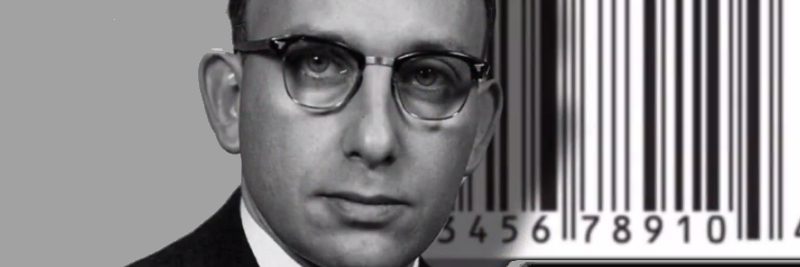You know those blocks of codes that are on virtually every package that is purchased from almost every store that are scanned as you check out? Those are barcodes and their invention helped to represent specific amounts of data based on the width and spacing of parallel lines. Modern bar codes can include 2D shapes as well, including hexagons, rectangles, and even dots. Where did they get their start? Who invented barcodes?
The origination of the idea came from a conversation that was overheard by a guy named Bernard Silver. He was a graduate student at a technology institute in Philadelphia and he heard that the president of a local grocery chain wanted to look at a way of having product information read automatically during a customer checkout. Silver talked to a friend of his, Norman Woodland, and together they started working on the first barcode systems. The result used ultraviolet ink, but it was both ineffective because the ink was prone to fading and it was a rather expensive process.
Was This the Start of the Modern Barcode?
After giving up on the ultraviolet system, Woodland move to Florida and shared a home with his father. He kept working on the system, inspired by what Morse code could do. Instead of dots and dashes, Woodland drew lines on the beach to represent the various data that could be represented. From there, he worked on the scanning process and determined that it work better in a circular format so it could be scanned in any direction.
In 1949, Woodland and Silver filed a joint patent application for what they called a “classifying apparatus and method” which included both the classic linear barcode we see on most products today and a bulls eye pattern that was expected to be the industry standard at the time. A patent was issued 4 years later and Woodland worked on trying to get IBM to develop the system and purchase the patent. The pair eventually sold their patent to Philco, a storage battery company, who then sold the patent to RCA.
A Competing System Was Developed At the Same Time
About the same time, a system of reflective strips was being developed by a man named David Collins. He worked for Pennsylvania Railroad and there was a need to automatically identify railroad cars. Using a series of red and blue reflective materials in a striped fashion, he encoded six digits into his system as a company identification number and then each car was given a four digit number.
The light that was reflected was fed through a photomultiplier and then filtered to determine the car’s identification. This system was tested through the 1960’s, but eventually abandoned in the 1970’s because environmental conditions could fool the system.
Barcodes have become an effective part of life for all of us today. They help us stay organized and we can use modern barcodes to access specific information about products or services with a simple scanning app on a smartphone. You can thank Woodland and Silver for that.
Strong proponent of individual liberty and free speech. My goal is to present information that expands our awareness of crucial issues and exposes the manufactured illusion of freedom that we are sold in America. Question everything because nothing is what it seems.




















